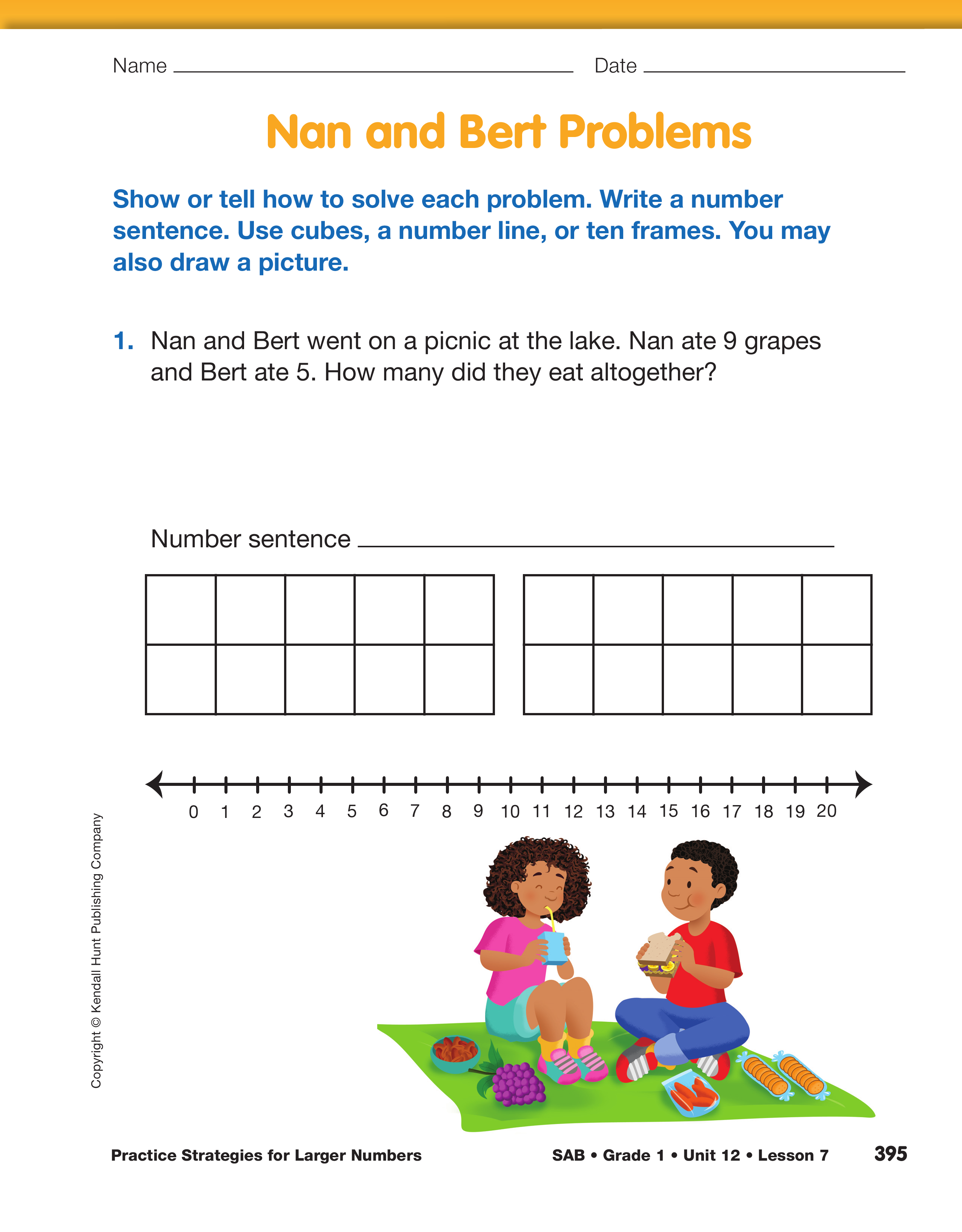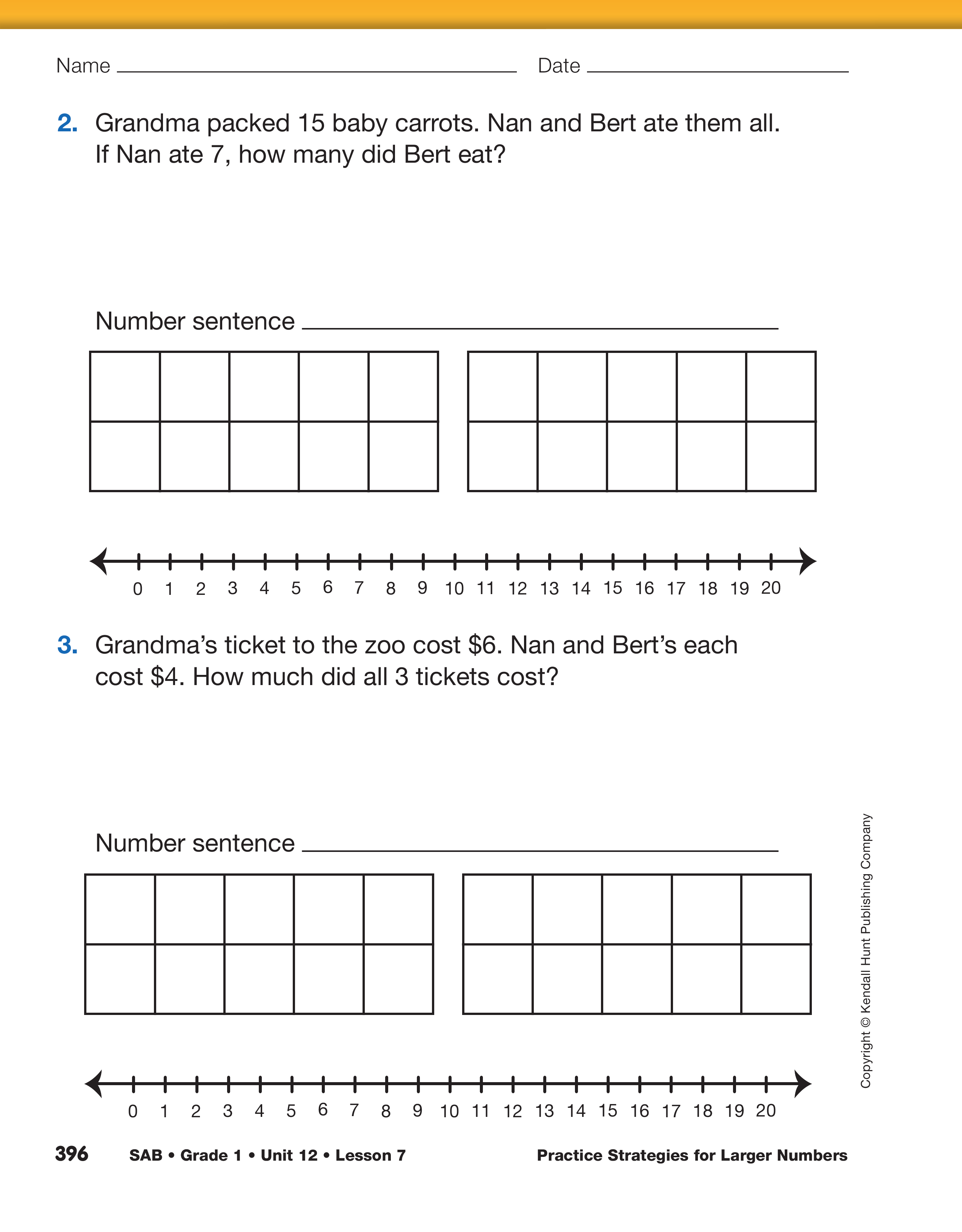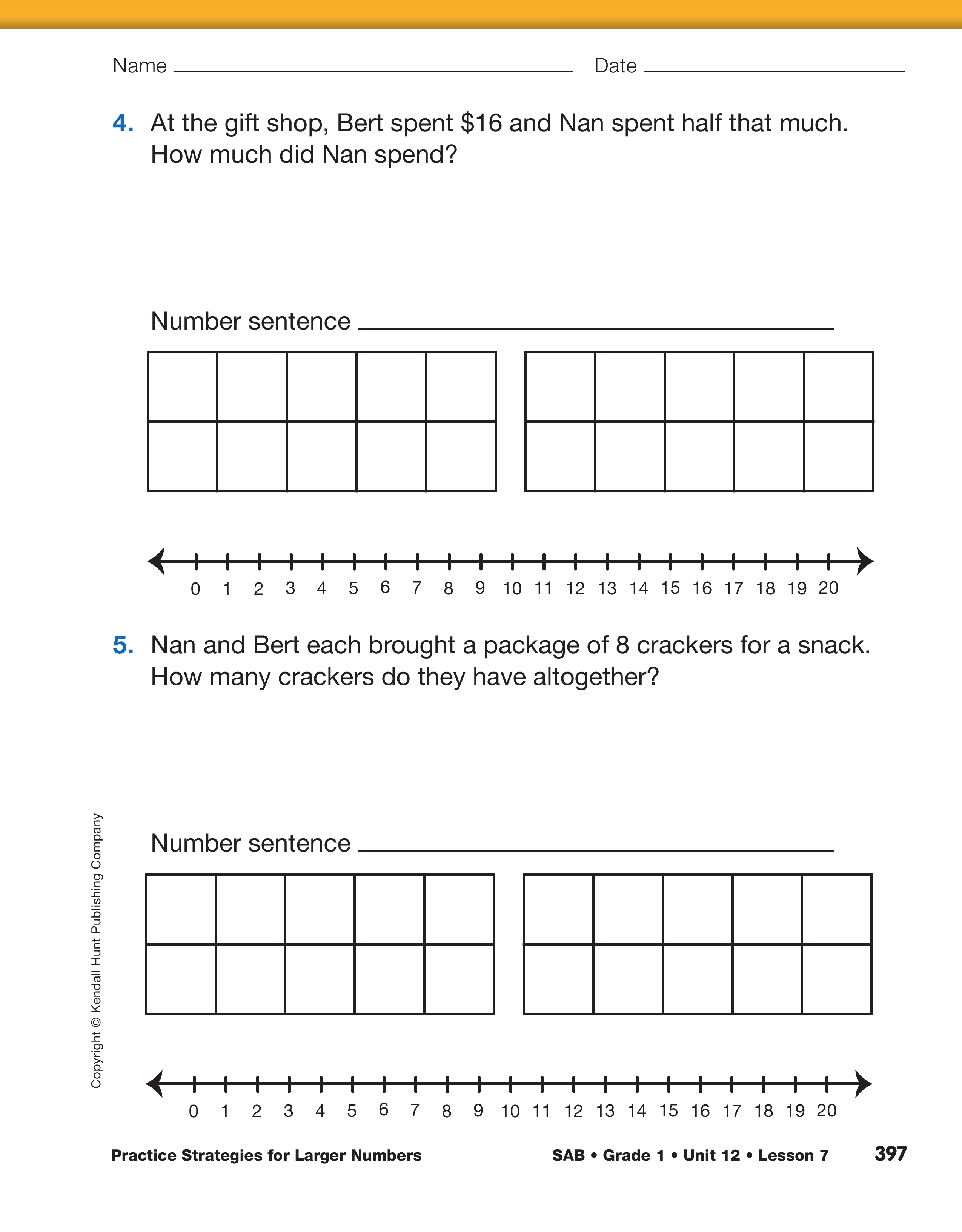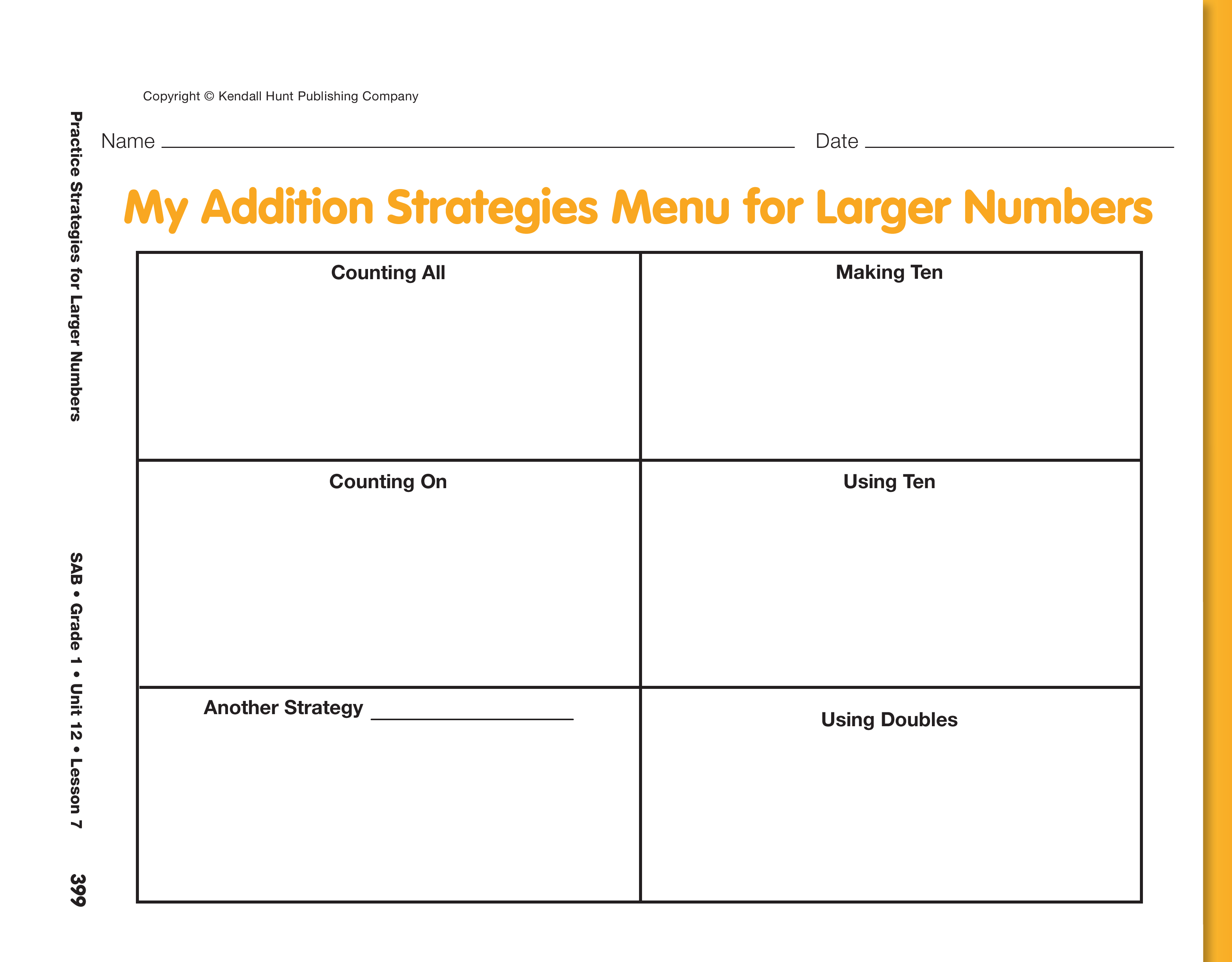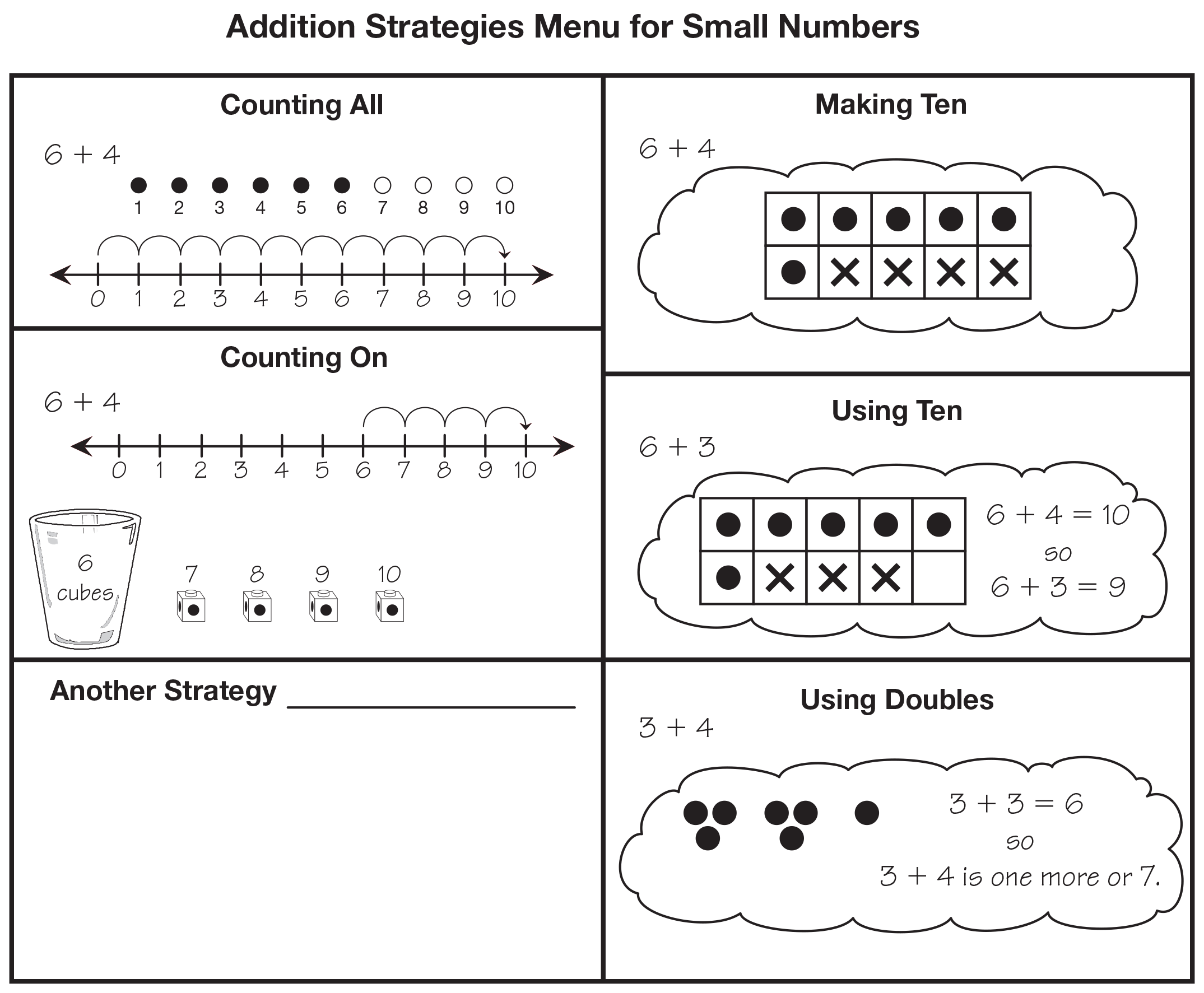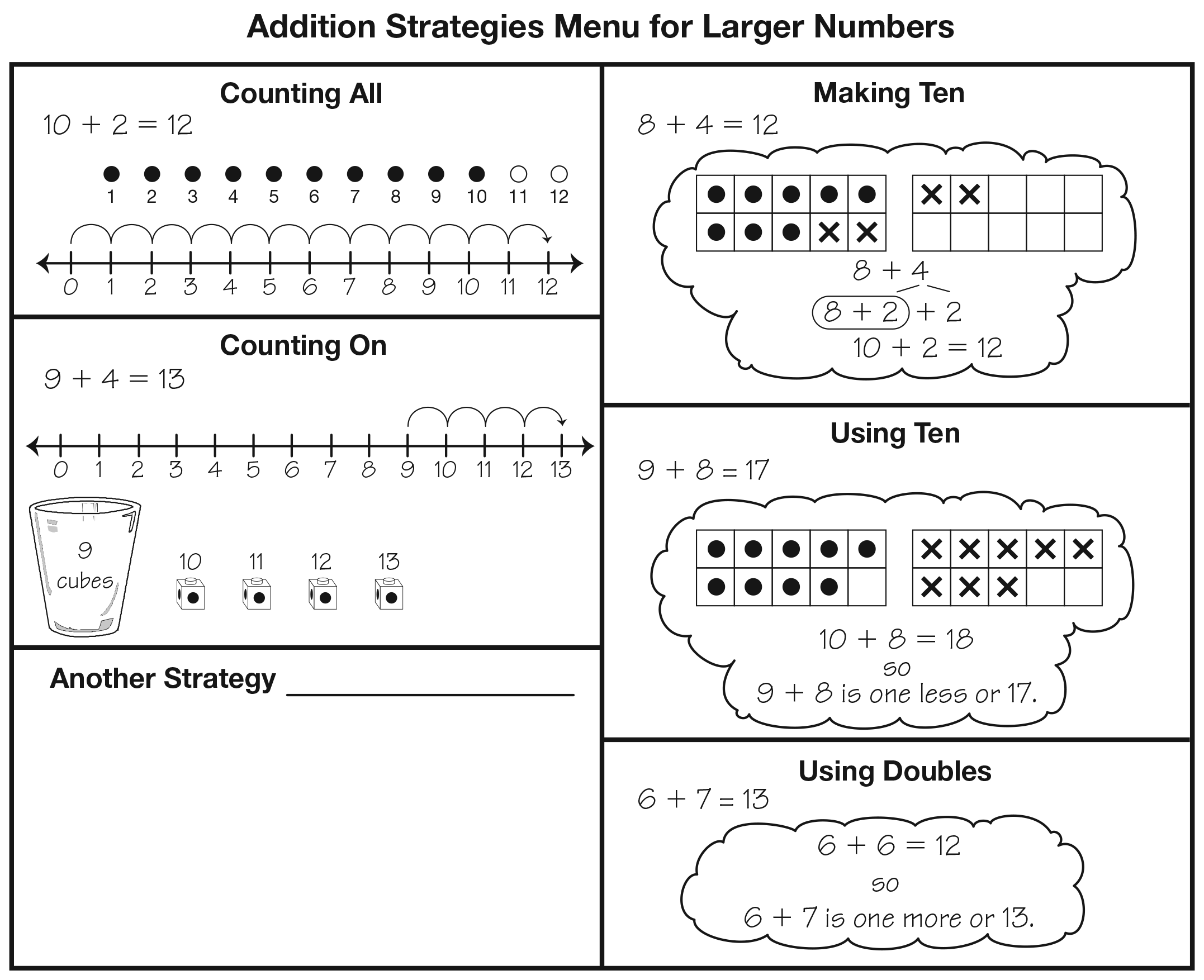Practice Strategies for Larger Numbers
Est. Class Sessions: 2–3Developing the Lesson
Part 1: Build Addition Strategies Menu for Larger Numbers
Solve Addition Facts with Larger Sums. Display the Invented Strategies chart from Lesson 1. Ask students to work with a partner to solve the problems on the Nan and Bert Problems pages in the Student Activity Book. As students are working, display the following facts from the Addition Cards for Larger Sums 1–2 Master you prepared. These facts correspond to the problems on the Nan and Bert Problems page.

After students have solved all five problems, discuss strategies for each problem. Questions 4 and 5 both correspond to the addition fact 8 + 8.
As students discuss each problem, ask:
Based on students' responses, tape the corresponding addition card near that strategy on the chart. See Figure 1. If there is more than one strategy that makes sense for that fact, display the card on one strategy and write the same fact by the other strategy.
Sort Addition Facts by Strategy. There should be 16 Addition Cards for Larger Sums left. Distribute these cards among the students and ask them to decide which strategy they think is best for solving each fact. As students decide, ask them to attach the card to the Invented Strategies chart. Encourage students to choose a strategy that makes sense to them. There is not one strategy for each fact. Students will need to see the facts displayed during the next activity in this lesson. Ask a few students to share why they chose a strategy for a particular fact. See Figure 1.
Build My Addition Strategies Menu. Display the Addition Strategies Menu for Small Numbers page in the Student Activity Book Reference section. Remind students that they developed this menu in Unit 6. See Figure 2.
Ask:
Ask students to use the My Addition Strategies Menu for Larger Numbers page from the Student Activity Book to make their own version of the Addition Strategies Menu but with larger numbers for examples. Tell students to look at the addition facts and the strategies displayed on the Invented Strategies chart to help them choose an appropriate fact and draw an example in each box on the My Addition Strategies Menu for Larger Numbers page. To guide this task, choose a strategy to focus on and display some facts. For example, focus on Making Ten and write the following facts on the board: 8 + 3, 5 + 6, 4 + 7.
Ask:
Continue to complete the other boxes on the menu using similar discussion prompts. The blank box is for other strategies students want to include. If students need additional space, they can continue to add strategies on the back of the page.
Compare Menus. Display the Addition Strategies Menu for Larger Numbers in the Student Activity Book Reference section.
Ask students to compare their menu to the one you have displayed. See Figure 3.
Introduce Move It to Make Ten. Gather the sets of Ten Frame Cards 1–9 you prepared. Display two cards: one showing 6 and the other showing 9.
Ask:
Repeat this activity several more times with other pairs of ten frame cards.













